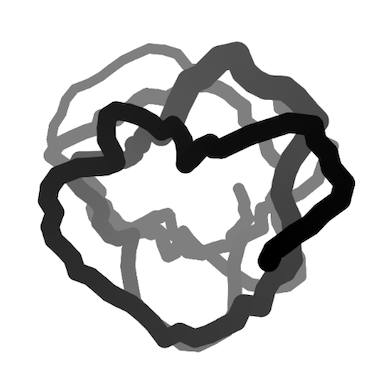1 Inch is 2 Inches is 3 Seconds is 4 Centuries
About This Project
EXHIBIT I. 60 Seconds, Variable Clocks
A realtime clock installation
The four clocks move in distorted time and snap back together every minute. We think of a second as something that is absolute but in reality our experiences of time play out in different forms and only snap back together to our synchronized time when we check our watches. The questions I’m trying to answer here are:
When does something become a pattern or a rhythm versus noise?
How do we sense that something is ‘something’?
That a second is a ‘second’?
To peel apart the layers between our experiences and our cognition; when we see something or hear something versus when that thing becomes known and conceivable, and to discover the emotions that lie between them.
Here I chose the form of a clock because it is one of the most rigid forms.
There is an expectation of what is a second, what is a minute and therefore a sense of suspense and confusion, not knowing which one to follow. While all at the same time being unconsciously driven by the sonic rhythms of the clocks.
The Variable Clocks mechanism, the underlying patterns of the piece:
EXHIBIT II. 1 2 3 4 , Tuning In
Interactive installation, two persons experience
The act of Counting is one of the most embedded structures within us. Children have to learn how to count in one-to-one correspondents, as if it is not obvious that counting is one-to-one. After all counting is simply a sequence. 1 2 3 4, Tuning In is an installation which asks people to count together, separately. It is about paying close attention and deep listening.
A crucial part of the piece is the setup; two people sitting facing each other connected through a digital interface. Each person sees one screen with 4 interactive slides.
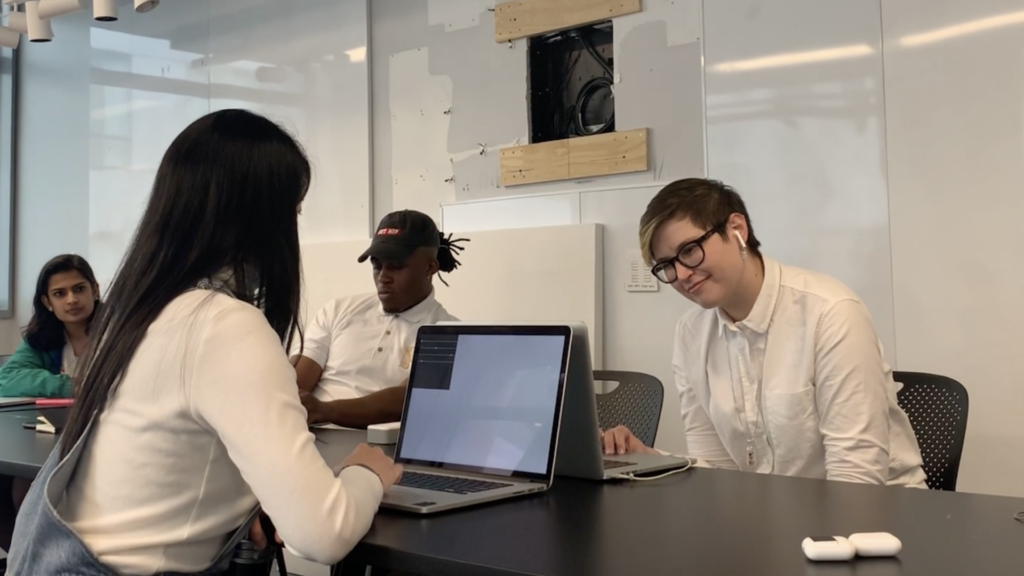
Once they click start, a playheads run through the slides at the same time. The tricky part is although you’re only seeing your own screen, you’re hearing both screens; yourself in one ear, another person in the other.
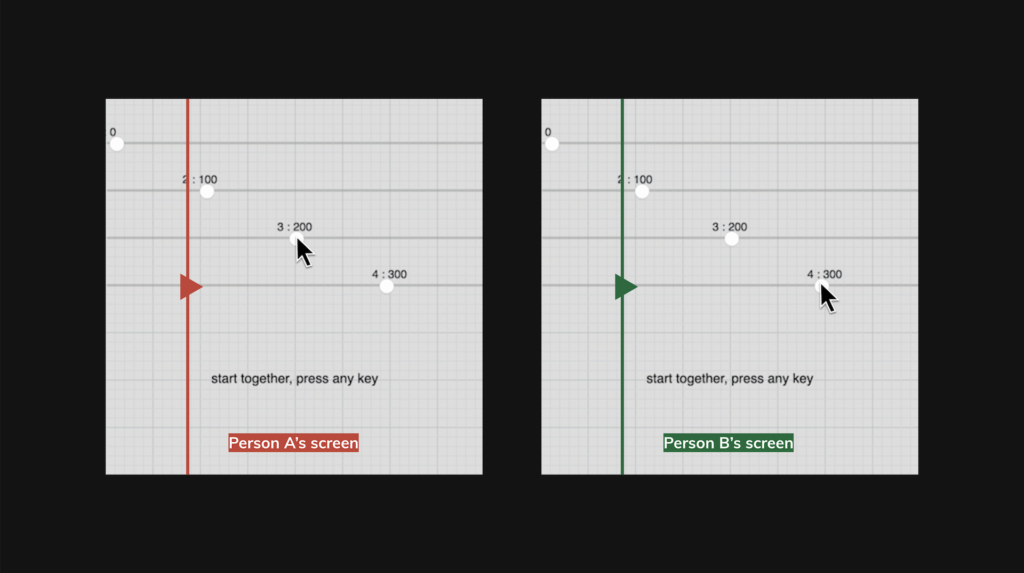
When you’re stripped from your usual sense making mechanism, you’re put in an exposed spot. The experience becomes solely about the interaction. Do you choose to lead or follow? Create a form of unison or counterpoint? People usually end when there’s a distinct pattern or rhythm. The longest time spent was 20 minutes.
This notion of stretching and contracting scales happen other forms of art as well such as movement and choreography. In one single movement, a slight change in timing can change the whole meaning of the dance.
EXHIBIT III. Ruler Series
Interactive objects and prints
This is a stretchy ruler. In this case it is used to measure that everything is 7 inches. This may seem silly and pointless but it can be used to measure a mid point of something. This one in a linear scale but you can imagine a golden ratio ruler that we can use to measure the arrangement of something.
Left: 4 rulers of the same length – but if you look closely, their measurements are different. On a screen, without a reference point, there is no way to tell which one is real scale, but what is real scale?
Right: 3 rulers based on the clock algorithm; sine wave, and random
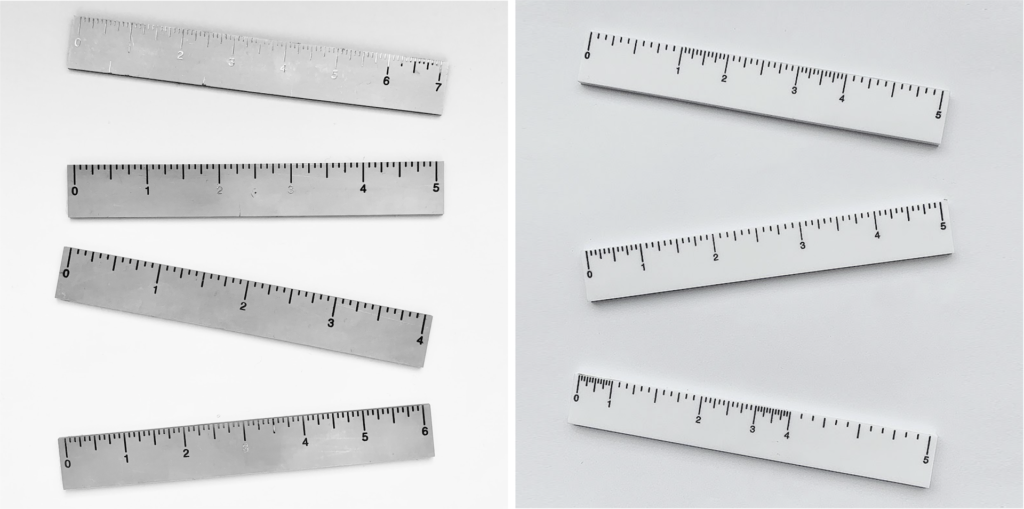
What if rulers were more than one dimensional, woven together?
Immediately as I show this to others, their minds actively try to find the relationship between numbers.
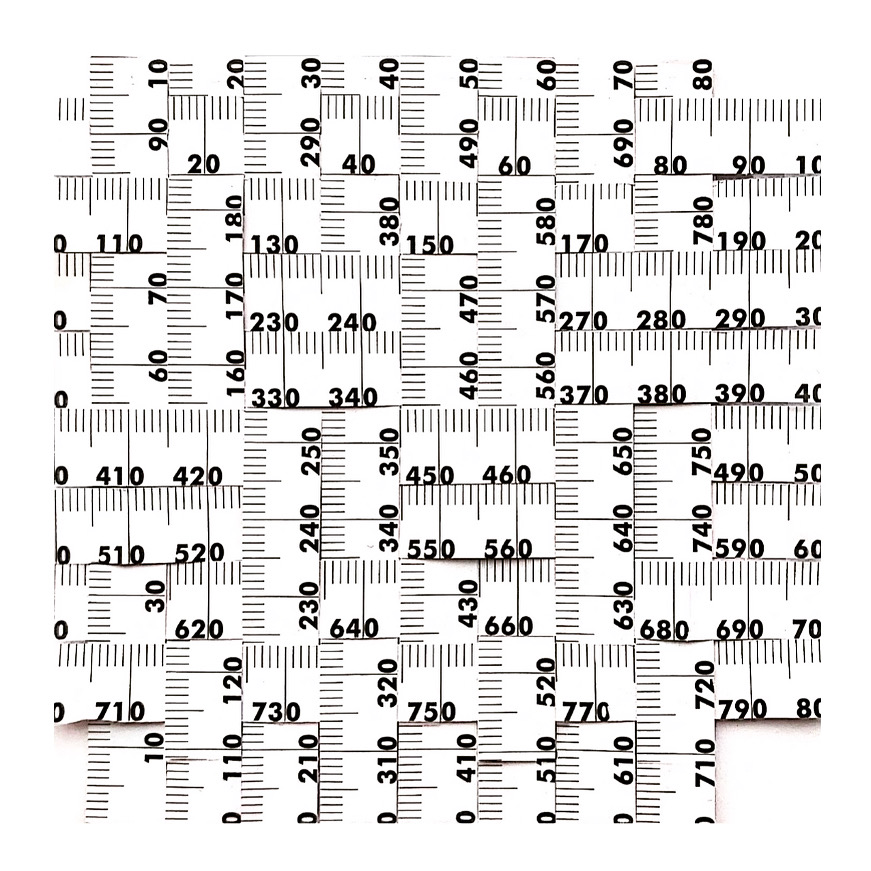
My Conclusion
Creating patterns is how we make sense of the world. We invent measurements to define those patterns.
However, those measurements are optimized for sameness, preventing us from experiencing what lies in between.
Patterns and noise exist together all at once in different scales; if only we look close enough or far enough, we can experience the patterns or rhythms that are around us where the interplay between each pattern is what creates an emotion and builds the arc of our experiences, much like a continual performance.
EXHIBIT IV. ’60’
Online installation made for the screen.
I would like to end with 60, an online installation made for the screen. I should ask you to fullscreen, and not take your eyes off the screen. We’re going to count to 60.
